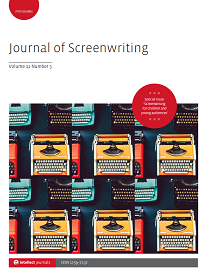
Full text loading...

Japanese cinema in the early twenty-first century has seen the emergence of Japanese-language films written by non-Japanese screenwriters. The arrival of these screenwriters and screenplays complicates existing discourses on ‘nation’ and the transnational in Japanese cinema. In particular, it adds to the tensions around East–West binaries that often permeate considerations of non-Japanese contact with cinematic representations of Japan and requires industry practitioners and researchers to re-consider notions of ‘Japan’ and cultural contact in cinema from Japan. Drawing on the concept of ‘accented cinema’, this article positions Japanese screenplays by non-Japanese screenwriters as accented Japanese screenplays. Two such screen texts are critiqued to suggest the dialogic inevitability of polyvocal interpretations of accented Japanese screenplays with regard to issues of privilege and marginalization, as well as the national and the transnational.

Article metrics loading...

Full text loading...
References


Publication Date:
https://doi.org/10.1386/josc_00128_1 Published content will be available immediately after check-out or when it is released in case of a pre-order. Please make sure to be logged in to see all available purchase options.